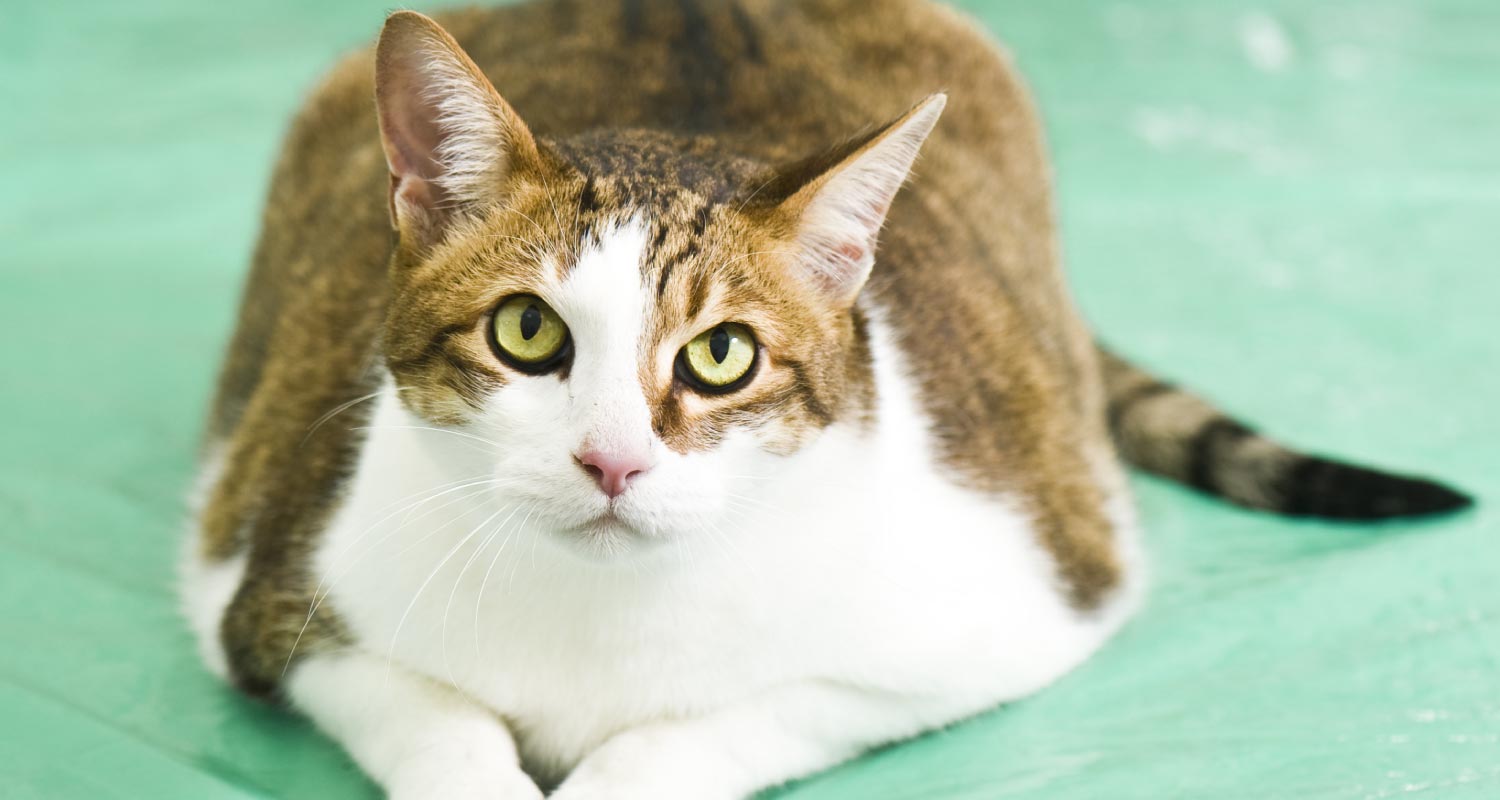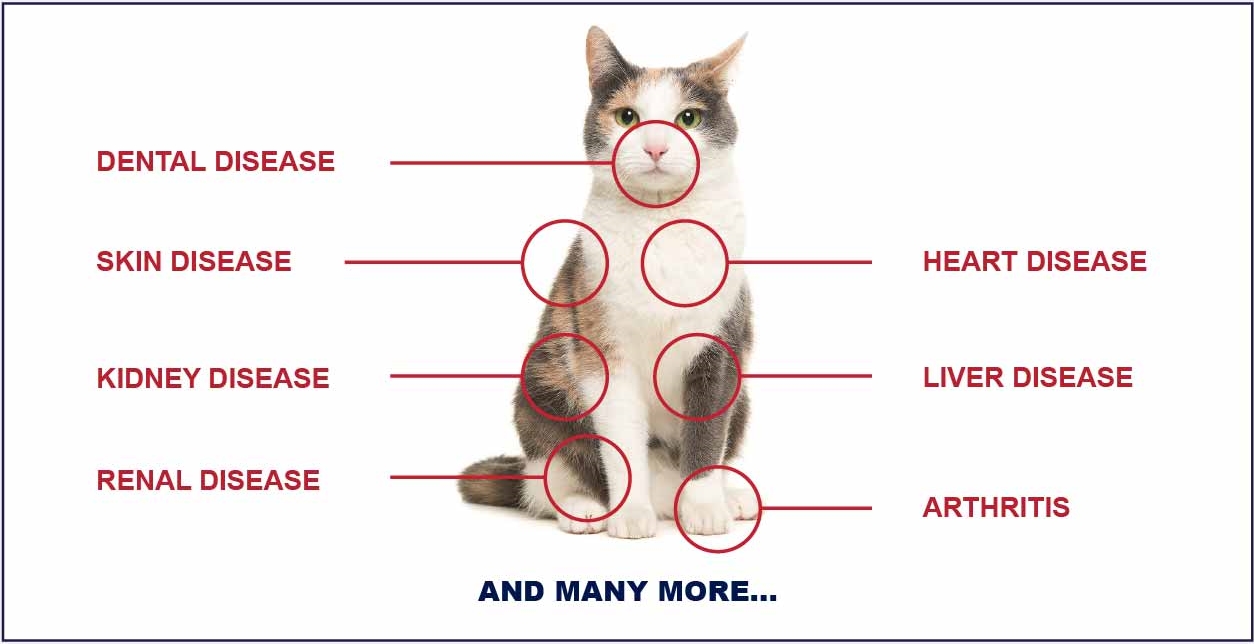HEALTH & WELLNESS

VOTING BOOTH

TRENDING

LIONS FOUNDATION OF CANADA DOG GUIDES
Lions Foundation of Canada Dog Guides and its founding program, Canine Vision Canada, was established in 1983. It’s the largest school of its kind in Canada with its training school in Oakville and breeding facility in Breslau.
What to Do When Your Cat is Overweight

Overweight and obese cats have shorter lives compared to cats that maintain their ideal body weight. Additional weight also comes with health risks.
Possible diseases and conditions that overweight and obese cats tend to suffer from include:

HOW CAN YOU TELL IF YOUR CAT IS OVERWEIGHT?
Looking at her won’t really help and perspectives of what’s overweight and what’s not differ vastly. Although, a lacking waistline is often worrisome.
So, to make it simple, feel the sides of her body by running your hand across her fur. Can you feel the ribs? Good, your cat is probably fine.
Struggling to feel the definition?
Then it’s probably time to start a program to help your cat lose weight.
HOW TO HELP YOUR OVERWEIGHT CAT?
It’s not as simple as changing food or playing more, there are many factors to address.
1. BOOK A VISIT TO THE VET
Sometimes it’s not lack of exercise or overfeeding that leads to weight gain. It’s a scary thought, but it could be a medical condition that’s getting in the way. The safest and smartest place to start looking for answers is your local veterinarian. A vet will also be able to direct you in terms of diet, whether your cat is suffering from a condition or not. If your cat has an illness, treatment (if available) can be started immediately.
Tips:
- Don’t drastically reduce calorie intake (liver risks).
- Make sure the results you’re chasing are not extreme. Set a reasonable timeline.
- Like overweight dogs, your cat can and should only lose about 1% to 2% of her body weight each week. Quick fixes will only backfire.
2. CAT FEEDING CRIMINALS
A – It’s in your cat’s best interest; her life is actually at risk. (Also get everyone onboard for the other factors we’ll mention below).
B – To avoid a situation where you see no results (or weight gain continues), make sure everybody is on the same page.
C – Family members, friends or even neighbours could be sabotaging your program.
D – Write and print flyers so that everyone is aware.
3. THE DEVIL’S IN THE DIET
As you may have guessed, the calories normally consumed have to be reduced.
Initial diet changes, as well as changes along the way, should all be monitored.
A cat’s ideal average size and activity level should also be kept in mind. The key here is to make changes slowly.
How to reduce calories:
- Less Food: If you’re going to stick to the same product, you’ll have to feed your cat less. As an example; instead of a full measuring cup, use 85% to 65%. Remember to monitor progress. It may be worth looking into a timed feeder for those times you’re away.
- Diet Food: It’s very important to source a quality, vet approved product that’s high in protein and low in carbohydrate as well as fat content. Food with fillers is only a temporary solution that will leave your cat hungry not long after a meal. With the right diet food, you should be able to feed the same portion size. You can even split the daily amount into more portions. If you don’t see results, slowly reduce the daily limit.
4. NO RANDOM SCRAPS AND WAY LESS TREATS
Anything that’s high in fat and sugar, that’s bad for you, will be really bad for your overweight cat as well. For some owners begging can be avoided by feeding before eating or even before you start cooking. If you must give the occasional treat; keep it green, light or generic.
Here is a few examples for treating your cat:

5. MOVE IT, MOVE IT
Getting your cat to exercise is not simple but it needs to happen. The occasional cat can do the leash thing, but don’t get your hopes up. For indoor cats, supervised time outdoors is a great first step. Some folks see more movement when there’s a larger mirror around or a screen showing cat videos. New toys sprinkled with catnip often get a reaction. Safe playtime (without claws and teeth) counts as attention and exercise, so make a little time for it.
6. VERY WELL, VITAMINS IT IS!
AND IT MIGHT ALREADY BE WORKING, but there’s something you could be forgetting… less food equals less minerals and vitamins. You don’t want to end up with a hungry and malnourished cat. Ask your vet about reputable supplements (e.g. Fatty acids) to keep things balanced. Any deficiencies could lead to bigger problems. The weight loss battle is big enough, so spare yourself the health war.
7. MEDICATION FOR CAT WEIGHT LOSS
8. WATCH THE NUMBERS
Create a template with dates and times (you can even try searching for a useful app). Everything consumed should be logged (even snacks); weight should be checked and logged (weekly); also keep track of exercise (intensity and duration) and when you are weighing your cat, use the same device and time of day. Just like a human being, a cat’s weight can stagnate so don’t be too alarmed.
9. KEEP UP THE MAINTENANCE
Continue all your good habits by checking those numbers every two weeks to make sure all your hard work doesn’t go to waste. At this stage, food can be increased bit by bit. If you start noticing weight gain, go back to the weight loss program.
10. GIVE YOURSELF A HIGH FIVE
![]() Ask your veterinarian for advise on the best diet to meet the needs of your cat. Your veterinarian can recommend food with a specific nutrient profile to help support one or more of your cat’s age-related conditions. Find a veterinarian near you.
Ask your veterinarian for advise on the best diet to meet the needs of your cat. Your veterinarian can recommend food with a specific nutrient profile to help support one or more of your cat’s age-related conditions. Find a veterinarian near you.
Related Articles








